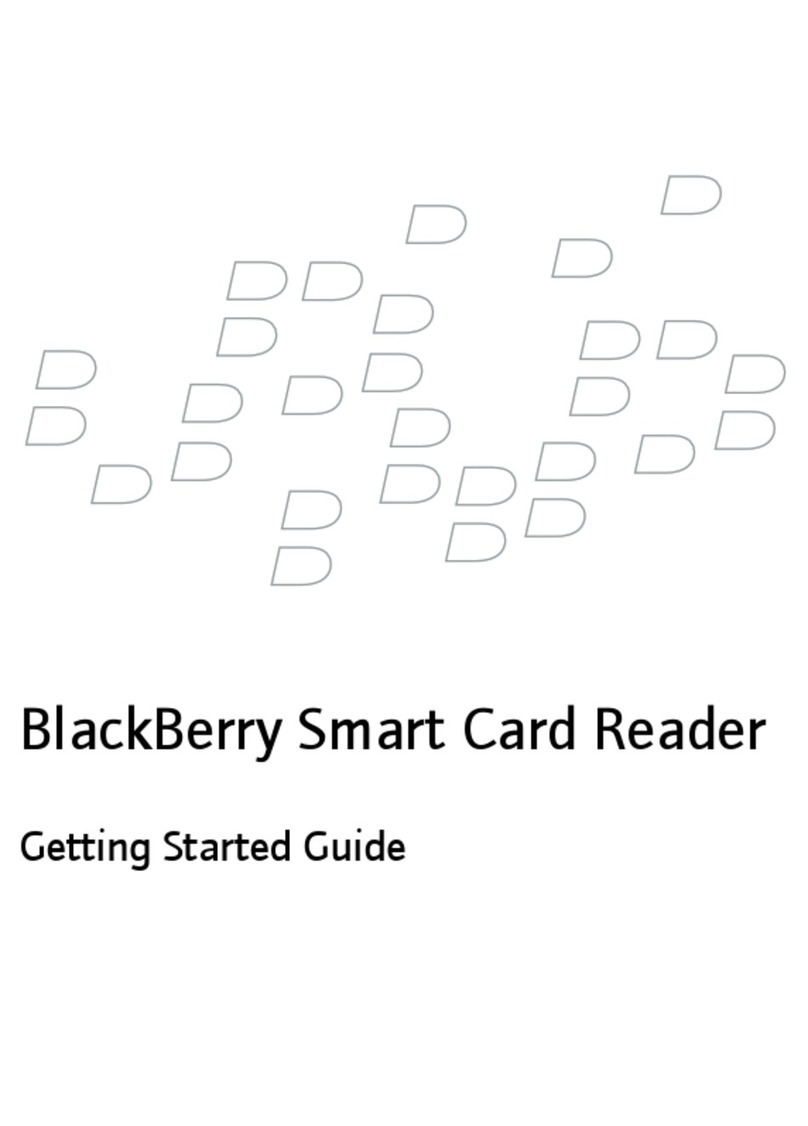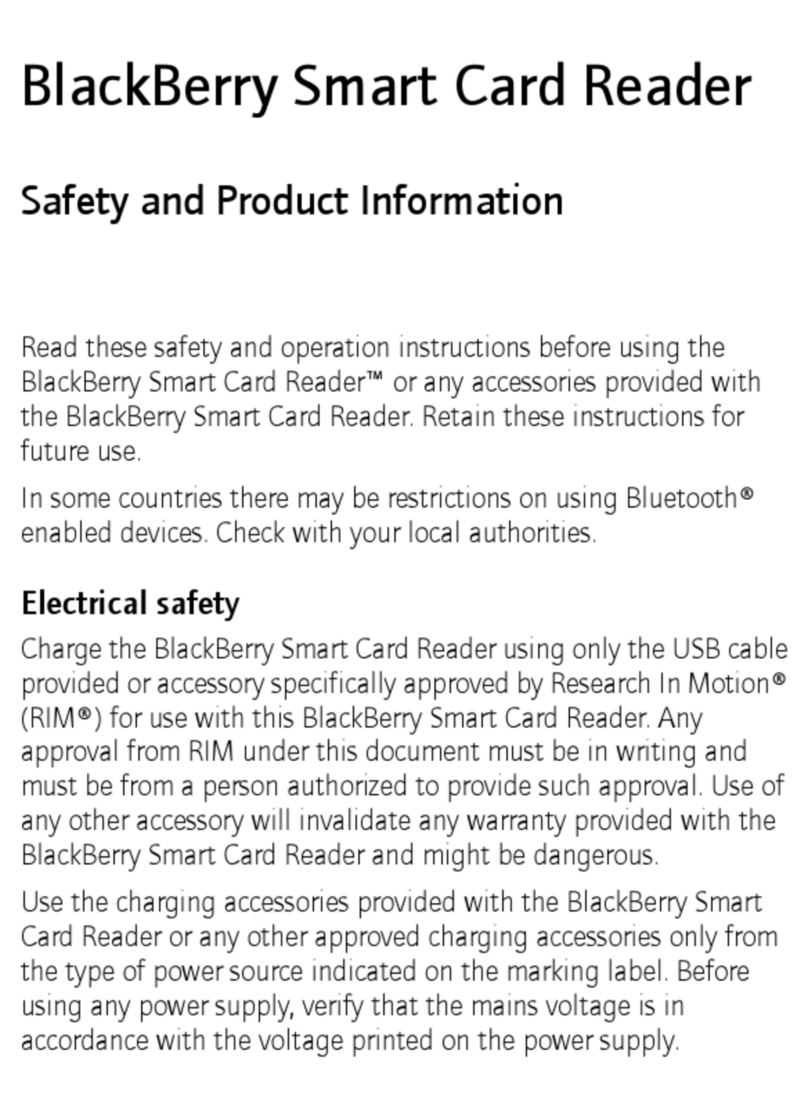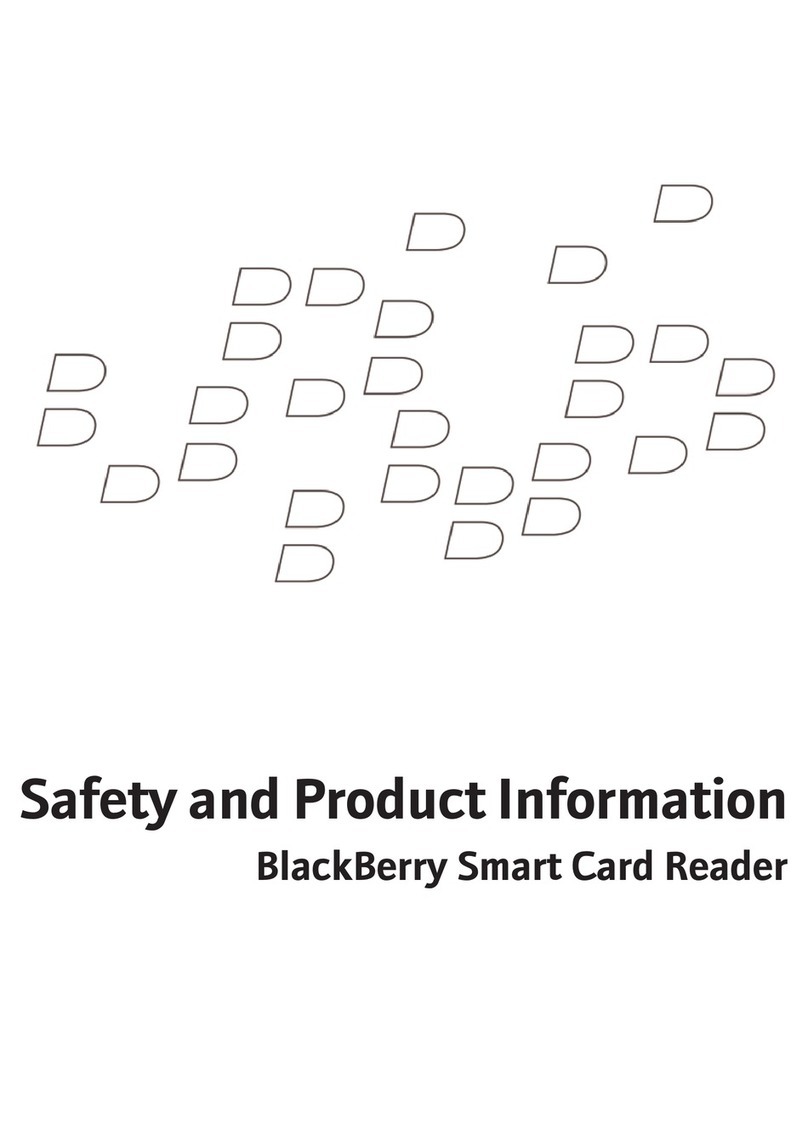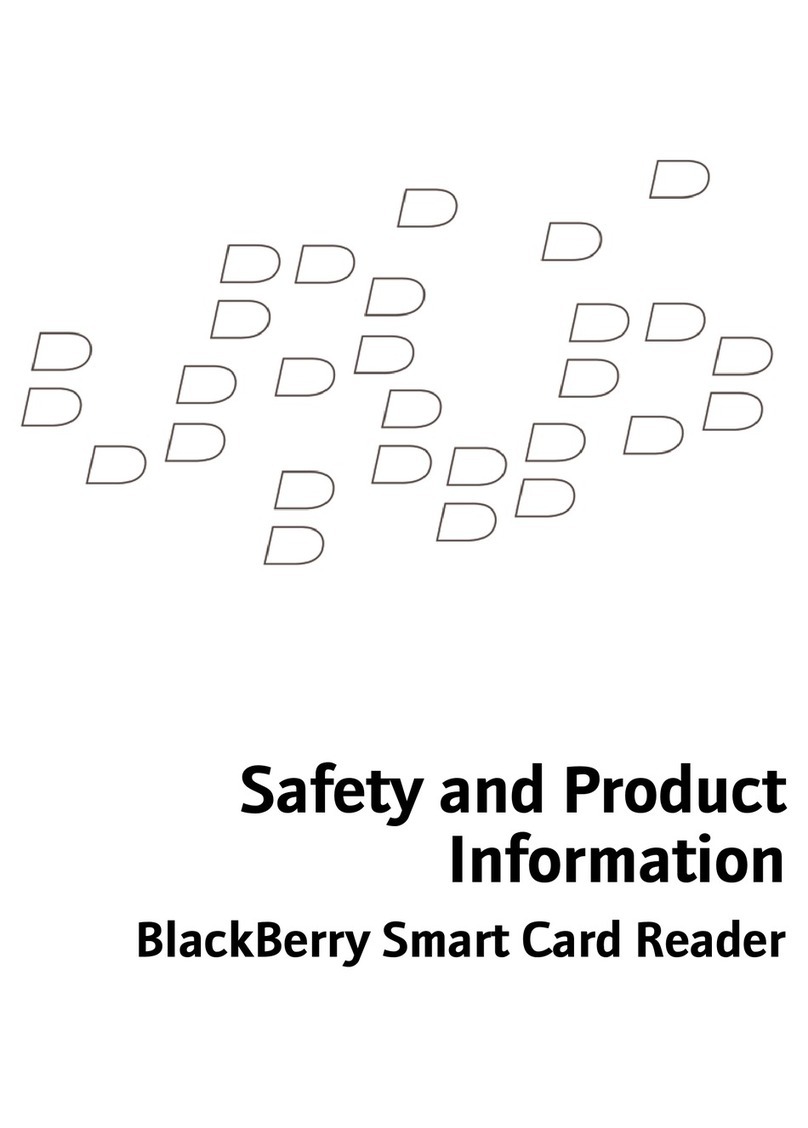
BlackBerry Smart Card Reader 7
•prevent Bluetooth enabled BlackBerry devices from sending or receiving address book information over a
Bluetooth connection
•prevent Bluetooth enabled BlackBerry devices from making phone calls
See the Policy Reference Guide for more information.
Restricting Bluetooth technology on the computer
On a Bluetooth enabled computer, when a Bluetooth wireless adaptor exists and is turned on, the computer also
installs Bluetooth drivers (and a personal area networking device, optionally) for that wireless transceiver. To
prevent users without administrator privileges, and external Bluetooth devices other than the BlackBerry Smart
Card Reader from using the Bluetooth technology installed on the computer, you or BlackBerry Smart Card
Reader users with administrator privileges can restrict the availability of the Bluetooth technology on the
computer. See Restricting Bluetooth technology on Bluetooth enabled computers BlackBerry Smart Card Reader
Technical Overview for more information about restricting Bluetooth technology on computers in your
organization.
Bluetooth security measures on the BlackBerry Smart Card Reader
The following security methods on the BlackBerry Smart Card Reader enhance the existing protection of the
Bluetooth wireless technology on Bluetooth enabled BlackBerry devices.
Security method Description
Limited use of discoverable mode When the user starts the Bluetooth connection process between the
BlackBerry Smart Card Reader and the Bluetooth enabled BlackBerry
device or computer, the BlackBerry Smart Card Reader enters into
discoverable mode long enough for the BlackBerry device or computer
to search for the BlackBerry Smart Card Reader and pair with it. The
BlackBerry Smart Card Reader is designed to enter into discoverable
mode whenever it displays the reader ID and its LED is solid green.
Limited use of serial port profiles The BlackBerry Smart Card Reader uses the Bluetooth Serial Port Profile
only, allowing you to use application control to shut down all the other
profiles and prevent third-party applications from using the BlackBerry
Smart Card Reader.
Use of Bluetooth pairing process
to help prevent passive attack
During the Bluetooth pairing process, the BlackBerry Smart Card Reader
uses a random key (unlike the hard-coded keys that headsets and other
Bluetooth enabled devices use).
Users always start the Bluetooth pairing process from their BlackBerry
devices or computers. If a message prompts users to type a pairing
password when they did not start a pairing process, they know that
another device, which they might not want to connect to, started the
pairing process. The Bluetooth pairing process is designed to help
prevent a passive attack in which a user with malicious intent tries to
search for the BlackBerry device PIN.
Control of the Bluetooth range You can use the Maximum Bluetooth Range IT policy rule to control the
power level of the Bluetooth wireless transceiver on the BlackBerry
Smart Card Reader. Setting the power level also controls the range of
proximity between the BlackBerry Smart Card Reader and the
BlackBerry device at which the two parties close the Bluetooth
connection between them. The range value does not translate to a
specific distance because the Bluetooth range is partially determined by
the power level. The range value is also heavily influenced by
environmental factors, including obstructions and electromagnetic
radiation. As a general rule, the Bluetooth range at power setting n+1 is
longer than the range at power setting n.
www.blackberry.com


































